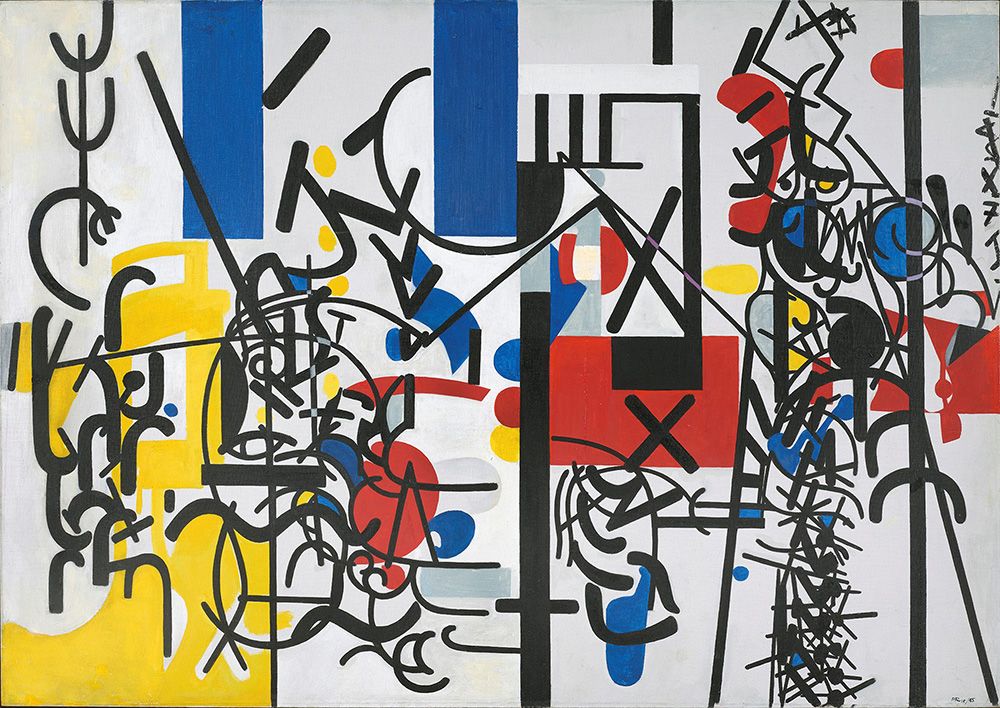In Perle Fine’s Grand March Opening Theme, you can almost hear the music.
Drawing on the energy and arrangements of jazz, Fine reveals a complex composition that makes the painting feel more like a dancing musical score. As the artist once explained, “I like to light up a canvas … I like to make it shout or whisper … spin or make forms melt softly over the whole picture.”
Inspired by fellow artist and friend Piet Mondrian, Grand March Opening Theme begins with similar primary colors and bold lines but quickly shatters the grid structure to create tempo and movement that use visual “crescendos” to carry our eye rhythmically across the work.
The title, Grand March Opening Theme, only further deepens the work’s connection to music. Evolving from 19th-century opera, the “grand march,” became a traditional opening at formal events to introduce guests and set a celebratory mood. Painted in 1945, as World War II was ending, Grand March Opening Theme suggests a moment to celebrate and a turning point in history.
Though the catastrophe forced many European émigré artists to seek refuge throughout the world, they had a profound influence on art in the United States, helping to build the country’s first modern art movement, influencing almost every aspect of America’s cultural life, and establishing New York City as the postwar epicenter of the art world.
By the end of the war, Fine had already been in the city for nearly two decades, had earned a Guggenheim grant and was working with Peggy Guggenheim. She was part of the American Abstract Artists and friends with artists like Mark Rothko and Louise Nevelson.
Through the respect and support of artists like Jackson Pollock and Willem de Kooning, she was one of the first women to be elected to a group known as “The Club,” and become part of the circle of artists who defined Abstract Expressionism.
But like other female artists Lee Krasner and Elaine de Kooning, Fine was marginalized, as gallerists asserted that her work was unmarketable and refused to show her paintings. Despite Fine’s work being equally ambitious and radical as her male counterparts, she was sidelined and eventually erased from the
movement’s history.
Disillusioned with the art world, Fine left New York City in 1954, setting up a small studio off a dirt road near East Hampton. It was a solitary but critical period for the artist, and she continued to develop her practice and experiment with color and line in a freer environment.
When she reemerged in the 1960s and throughout her career, Fine continued to push the boundaries of painting, never settling on one style or approach. She saw her studio work as a visceral and intellectual struggle that added substance, and would even destroy canvases that did not meet her standards.
“I had a whole exhibition ready to go out. And I decided it was not going to go … And I destroyed every painting there,” Fine recalled, “But I learned more from that experience than from anything that ever
happened in my life. Because … I knew that depth of feeling was important, but I didn't know that the degree of depth was the most important feeling … and that if it didn't have that depth of feeling, that intense degree of depth of feeling it would have absolutely nothing.”

